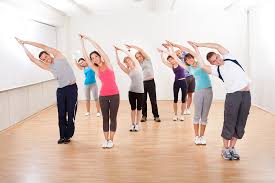

The body loves movement! The longer we stay in one position the shorter, tighter, more dehydrated and unhealthy our tissues become. In the absence of movement our tissues can become stuck together, literally! Small bonds of areolar tissue (connective tissue) form and bind our tissues together making them stiffer and less elastic. By following the mobilisers in this article we can break these bonds with the heat generated by our movement. Movements like this needs to be regular however as we start to bind together again as we remain static!!
To see more on connective tissue and tissues binding together please see the video below by Dr Gil Hedley.
(****warning : this video contains dissection of real tissue)
http://youtu.be/_FtSP-tkSug Dr Gil Hedley : Fascia and stretching ‘the fuzz speech’
Fascia is connective tissue that supports, links and winds around and through all of our bodily systems. It forms envelopes around everything: nerves, bones, brain, spinal cord, muscles, organs and cells. We can view it to be almost like a large spider’s web which gives us our shape with our bones, organs and muscles suspended within it.
It has a dual purpose of both stability and movement. It allows our tissues to slide dynamically and yet holds us firmly together and governs the shape of the body. It is incredibly strong when required, allowing you to hang off a tree branch with one arm without the arm pulling out of the socket! In stark contrast, it can also be moulded easily like putty to create length and space within the joints, muscles and reduce restriction around the organs.
Our fascial system is the mediator between all systems of the body and provides a large amount of sensory information back to the brain as to how we are moving. Restrictions in this tissue however can lead to pain and dysfunction and even affect how our organs function.

The following exercises mobilise the fascial system nicely creating length in the system and also allowing tissue surfaces to glide upon one another , increase circulation and promote waste removal from the tissues.
Just like with bone and muscle, we can make our fascial system more mobile and stronger by using and stressing it appropriately with the right movement exercises and load. It will become stronger with use. It can be broken down and weakened however with disuse and a poor diet. (especially one high in omega 6 fatty acids such as vegetable oil)
The following 3 videos outline some basic mobilisers for the calf, hips, inner thighs and thorax.
All of these exercises can be done first thing in the morning, before and after exercise.
This exercises works into the calf and foot but also into the front of the hip.
Ensure both feet are facing forward and the back foot doesn’t twist out.
The foot should have a rhythm of gently rolling in and then out to the outer border of the foot whilst keeping the big toe in contact with the floor.
This exercise is to open up the inner thigh and front of the hip.
Aim to keep the trunk relatively still throughout this and move from the pelvic region. We want to think of shifting the pelvis to get maximum mobility in the inner thigh and good loading into the outer hip muscles.
This mobiliser it great to do in the morning to ‘unstick’ your tissues after sleep and get the trunk moving well again.
Work in a forward direction first before you open backwards.
This exercise can also be done sitting at the work desk but has less impact on the lower limbs and pelvis and more targeted into the thorax. Again be careful when reaching backwards.
Welcome to freedom in movement!
Come along to our Physio led Pilates classes and “love the way you move”
Locations:
Sydney North Shore: Roseville
(We are easily accessible for clients based in Willoughy, Lindfield, Killara, Artarmon, Forestville, Chatswood, Gordon and St Ives).
Sydney Eastern Suburbs : Darlinghurst
Phone Sally on :0404 366 363 or visit our website www.pro-align.com.au and enquire now!
